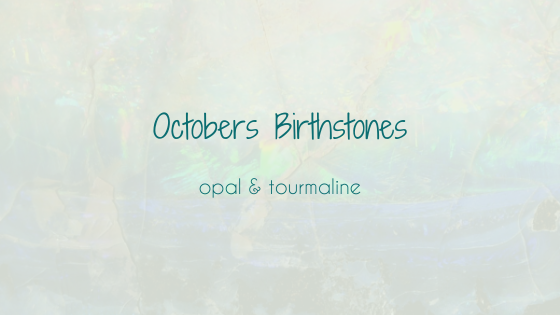
October - all about Opals (and tourmaline!)
October is another month with 2 birthstone - Opal (one of my favourites) and Tourmaline (also one of my favourites!)

Opal
The name of this gem is believed to have originated in India (the source of the first opals brought to the Western world), where in Sanskrit it was called upala, a “precious stone". In ancient Rome, this became opalus.
With amazing shows of colour it's no surprise that Bedouins once believed opal held lightning and fell from the sky during thunderstorms. Ancient Greeks thought opals bestowed the gift of prophesy and protection from disease and Europeans long maintained opal to be a symbol of purity, hope and truth.
Tourmaline
Tourmaline is a newer birthstone. The name comes from the Sinhalese 'toramalli', which means “stone with mixed colours”, because it often has multiple colours in one crystal. Very few gems match tourmaline’s dazzling array of colours. Perhaps this is why ancient mystics believed that this October birthstone could inspire artistic expression – it has a colour palette for every mood. Among the most popular are the pink and red rubellites, the emerald green “chrome” tourmalines, and the neon green and blue-to-violet “paraíba” tourmalines. You shouldn't miss the juicy watermelon tourmaline though!
Because of its vast range of colours, tourmlaine has often been mistaken for other gemstones. One of the “rubies” in the Russian crown jewels, the “Caesar’s Ruby” pendant, is actually red (rubellite) tourmaline. A Spanish conquistador found green tourmaline crystals in Brazil in the 1500s and confused the stones with emerald. These and other cases of mistaken identity continued for centuries until scientists recognised tourmaline as a distinct mineral species in the 1800s.
Source information from GIA.edu
